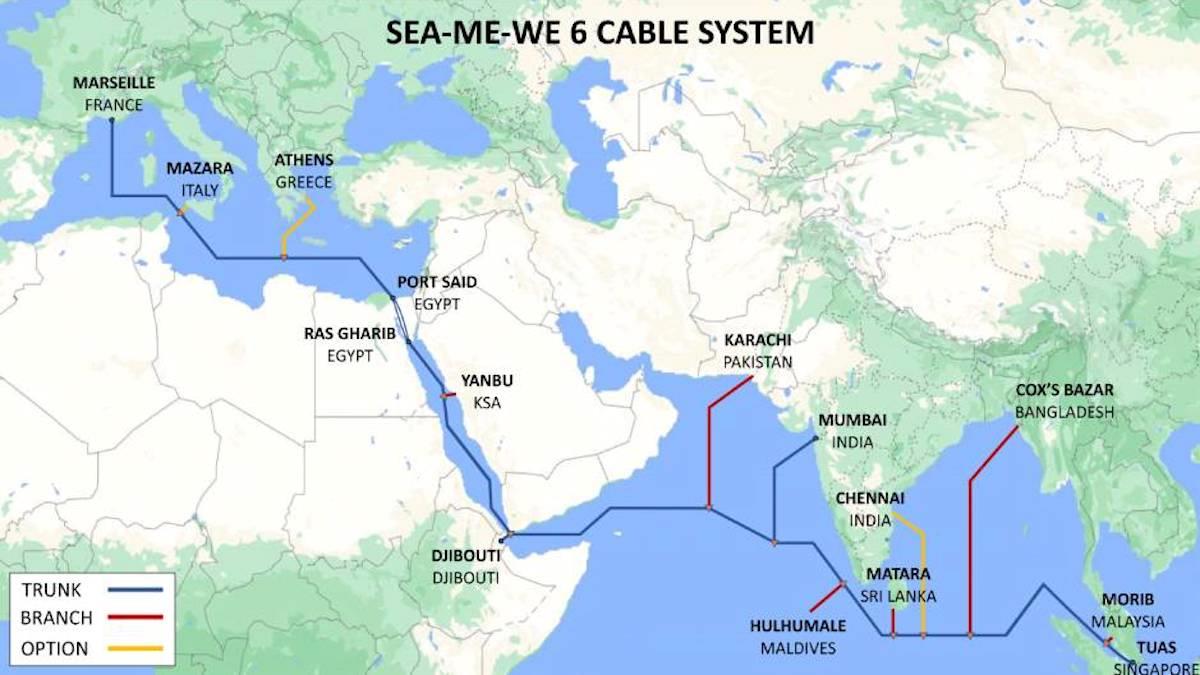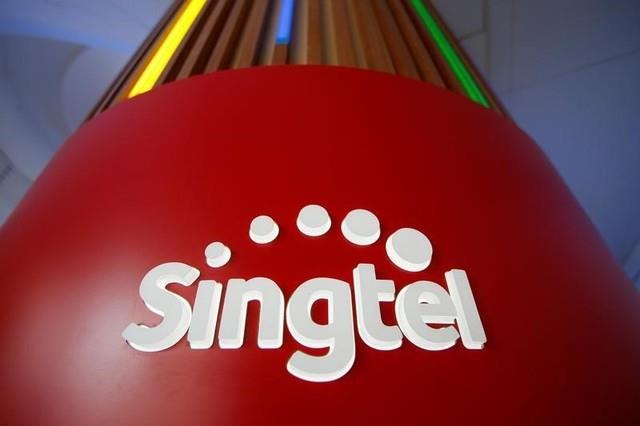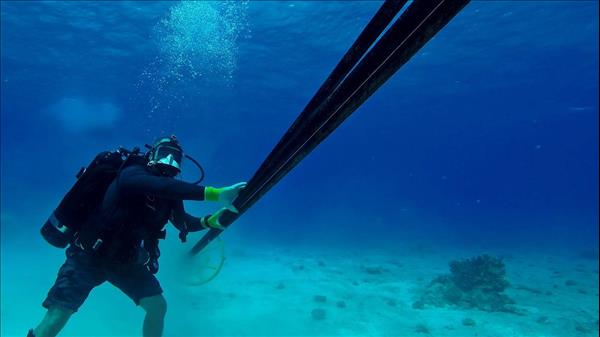(MENAFN- Asia Times) The United States and China's technology war is not only about semiconductors but now also about undersea internet cables, with Washington moving to ensure that new cables will bypass Hong Kong and be free of Chinese investments and contractors.
Before the Biden administration unveiled more chip export restrictions against China in mid-2022, it helped SubCom LLC, an American subsea cable company, win a contract to build the Southeast Asia-Middle East-Western Europe 6, or SeaMeWe-6, internet cable.
Details of how a former undersea cable arm of Huawei Technologies, China's top telecommunications infrastructure company, lost the bidding were not known until SubCom recently began laying the Singapore-to-France cable to the seafloor.
Over the past four years, the US has intervened in at least six private undersea cable deals in the Asia-Pacific region, either by calling on cable investors to avoid using Chinese contractors or asking US technology giants to re-route their new cables to Taiwan and Singapore, and away from Hong Kong.
At the same time, Beijing accelerated the construction of a new cable between its Hainan province and Singapore and slowed another one that involved Taiwan and Japan. IT experts have said Hong Kong is at risk of losing competitiveness if it operates at slower internet speeds in the coming years.
A special report published by Reuters on March 24 said HMN Technologies Co Ltd, formerly known Huawei Marine Networks Co Ltd, was selected to manufacture and lay the SeaMeWe-6 internet cable in early 2020 with a bid of US$500 million, which was about a third lower than the amount proposed by SubCom.
However, Huawei was forced to quit the project due to the US government's intervention, according to the report. The US Commerce Department then pressured the cable investors to choose SubCom. The US Trade and Development Agency (USTDA) also granted US$3.8 million of training funding to five telecom companies in countries on the cable route.
In February 2021, SubCom lowered its bid to about $600 million while HMN slashed its bid to $475 million, Reuters reported, citing unnamed sources.

The Southeast Asia–Middle East–Western Europe 6, or SeaMeWe-6.
Photo: Singtel.com
In late 2021, an executive from SingTel, who chaired the cable committee representing the investors, called a vote for the contractor.
China Telecom and China Mobile, which owned a 20% stake in the project, had threatened to walk away but they ultimately failed to stop other committee members from choosing SubCom, the Reuters report said. On February 21 last year, SubCom announced it had won the contract to build the 19,200-kilometer undersea cable.
The two Chinese telecom giants later pulled out from the deal with their stakes being split by other members and two new investors – Telekom Malaysia Berhad and PT Telekomunikasi Indonesia International. Their departure was only reported on February 10 this year by the Financial Times, which said China Unicom was still involved in the project.
Paul McCann, a Sydney-based consultant, was quoted as saying in the Reuters report that over the last four decades, he had not witnessed such geopolitical influence over subsea cables.
The SeaMeWe-6 is designed to link Singapore to Marseille, France, passing through Malaysia, Bangladesh, Sri Lanka, Maldives, India, Pakistan, Djibouti, Saudi Arabia, Egypt, Greece and Italy along the way. It is scheduled to be completed in the first quarter of 2025.
Huawei Marine was originally 51% owned by Huawei and 49% owned by Global Marine Group, a United Kingdom-based submarine cable service provider.
After Huawei was sanctioned by the US in May 2019, it sold its entire stake in Huawei Marine to the Shanghai-listed Hengtong Group, a Chinese fiber optic cable manufacturer, which later bought another 30% stake from Global Marine.
In August 2020, Huawei Marine was added to the“Entity List” of the US Bureau of Industry and Security (BIS). It was rebranded as HMN in November that same year.
In April 2020, then-US president Donald Trump signed an executive order to set up an interagency committee, later called Team Telecom, to safeguard US telecommunication networks from cyberattacks and spies.
Since then, four cables between the US and Hong Kong were asked to redirect their terminals from the special administrative region to other places including Taiwan and Singapore. These projects involve US internet firms such as Google and Meta.
As more and more cables will link with other cities, Hong Kong will become less attractive to foreign technology companies due to its slower internet speeds, Francis Fong, chairman of the Hong Kong Association of Interactive Marketing, said in a previous interview.
However, Fong pointed out that the Chinese government has started laying more subsea cables in recent years to reduce its reliance on foreign facilities. He said Beijing has also built more cables connecting with BRICS countries, which include Brazil, Russia, India and South Africa.
In November 2022, Singtel, together with five other telecom carriers, announced the signing of a $300 million contract to build a 6,000-kilometer submarine cable system, namely Asia Link Cable (ALC).

Singapore's Singtel is in the middle of the cable wars. Photo: Agencies
The cable, connecting Hong Kong, Singapore, the Philippines, Brunei and China's Hainan, is to be completed in the third quarter of 2025.
“The ALC will bring greater connectivity capacities to transform industries, unlock more opportunities for innovation, further enhancing the digital experiences of Southeast Asian consumers and supporting the growth ambitions of the region,” said Bill Chang, chief executive at Group Enterprise and Regional Data Center Business, Singtel.
The Financial Times reported on March 14 that the Southeast Asia-Japan Cable 2 (SJC2), which is to connect Taiwan, Singapore and Hong Kong, was delayed for more than one year due to Chinese opposition.
For months, Beijing has held back from allowing seabed exploration in Chinese territorial waters around Hong Kong, citing national security concerns,
according
to the report. The SJC2 project's investors
include China Mobile, Chunghwa Telecom and Meta.
Early last month, two undersea cables in the Taiwan Strait were damaged by two civil ships, a cargo ship and a Chinese fishing vessel, causing a serious internet disruption to 14,000 people on the Matsu Islands. Taipei said there was no evidence that Beijing had ordered an attack on the facilities.
Kenny Huang, chief executive at Taiwan Network Information Center, said he is worried that Taiwan's undersea cables could be attacked if and when Beijing invades the self-governing island. He said the Taiwanese government should use low-Earth-orbit satellites to diversify the island's internet connections.
read: huawei's new chip supplier draws us attention
Follow Jeff Pao on Twitter at
@jeffpao3
Like this:Like Loading...






















Comments
No comment